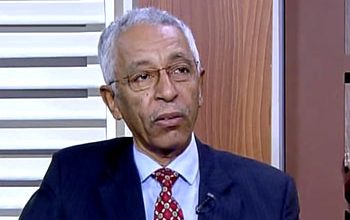Kordofan… Sudan’s Stalingrad: How the Army Is Reshaping the Nation’s Destiny

Dr. Abdulnasir Salim Hamid
In wars that determine the fate of nations, battles are not won solely by weaponry, but by the ability to regain control, crush rebellion, and restore sovereignty. This is precisely what the Sudanese Armed Forces (SAF) accomplished when they chose Kordofan as the gateway to victory.
At the beginning of 2025, the SAF launched a major military campaign in the region, driven not only by the need to expel the Rapid Support Forces (RSF), but to sever the geographic and logistical link between Darfur and the capital, and to cut off the rebellion’s resources that flow through smuggling routes stretching from the borders to the heart of Khartoum.
Geographically, Kordofan is not peripheral — it is pivotal. It connects east and west and controls strategic lines stretching from El-Obeid through Dilling, Dubeibat, and Al-Khuwei toward Darfur. Whoever holds it effectively controls the geographical distribution of the conflict and reshapes the balance of power.
The army moved with a precise plan. Rather than a sweeping invasion, it adopted a tactic of “central nibbling”: stabilizing El-Obeid as a base for operations and logistics, reclaiming Dubeibat as a critical link, and securing Wad Banda — one of the most significant illicit smuggling gateways. In An-Nuhud and Al-Khuwei, pressure was applied steadily, following a strategy of gradual suffocation.
These operations revealed the SAF’s tactical superiority, particularly through the use of drones and precision artillery — a reflection of high combat readiness and decisive technological edge. This harmony between field capabilities and strategic planning provided a solid foundation to breach the RSF’s defenses.
Contrary to some reports suggesting voluntary RSF withdrawals from lost positions, the truth is that they suffered direct field defeats under intense military pressure. The combined effect of heavy artillery, drone strikes, and coordinated ground offensives led to the collapse of RSF lines, especially in Dubeibat and Al-Khuwei. The army’s use of “multi-directional pressure” deprived RSF forces of the ability to maneuver or organize effective defenses, rendering their defeat inevitable.
Though administrative challenges are no less important than military ones, the army promptly began coordinating with local authorities to restore institutions, recognizing that true victory lies in fully reestablishing the state. The “Abu Zabad” case demonstrated how restoring police presence and basic services was crucial to rebuilding public trust.
Kordofan’s demographic landscape is marked by regional overlap and immense social diversity, requiring the military to carefully navigate shifting local alliances. Stability after liberation needs more than a military presence — it calls for genuine political and social engagement with local leadership.
While the campaign has achieved its immediate goals, it has also opened up a new strategic front: Darfur. From its current positions, the SAF can advance along three axes into the western heartland. However, without first ensuring administrative control over Kordofan, any movement toward El Fasher or Nyala would be built on fragile ground.
Maps of the advance show that the distance between the liberated cities and El Fasher remains significant, posing logistical and security challenges. El-Obeid, the main launch center, lies about 876 kilometers from El Fasher via key towns like An-Nuhud and Umm Kaddada. From Dubeibat, the total distance is approximately 976 kilometers, while Al-Khuwei lies around 979 kilometers away by road. This vast stretch, which crosses densely populated and tribally entangled regions, requires a phased approach and multi-layered security, particularly at critical points such as An-Nuhud and Al-Kuma, before reaching El Fasher — the campaign’s principal target in North Darfur.
An-Nuhud is seen as one of RSF’s main eastern defensive lines for Darfur. Gaining control over it would not only mark geographic progress but would also deliver a symbolic blow to RSF’s eastern defenses, allowing SAF to advance toward El Fasher faster and with fewer field risks. Capturing An-Nuhud would shatter the “eastern shield of Darfur,” potentially triggering a chain collapse of defensive positions all the way to Umm Kaddada and Al-Kuma.
In parallel, the psychological and organizational collapse of RSF forces in Salha makes it unlikely they can mount meaningful resistance in Rabak. As their retreat paths fall apart, their presence in White Nile State becomes largely symbolic, potentially enabling the SAF to take control of Rabak swiftly and with minimal resistance.
On a broader scale, smuggling routes between Kordofan and Chad remain partially active. Gold, fuel, and weapons can still be smuggled through paths invisible to radar systems. Unless an economic-security cordon is established to seal these routes, the threat will persist — and could later fuel another war from across the border.
All of this reverberates in the political arena. Control over Kordofan means more than holding terrain — it means dominating the tempo of any future negotiations. RSF’s political maneuverability has shrunk after losing its central strongholds, and it now holds only isolated pockets in Darfur. In contrast, the SAF now controls the key nodes, giving it the upper hand in any settlement — even before talks begin.
Based on the current pace of operations and the distribution of field control, estimates suggest that it may take the army between five to eight weeks to reach the outskirts of El Fasher. This depends on securing full control over An-Nuhud and Al-Khuwei, and opening the axis through Umm Kaddada and Al-Kuma. Given the geographic conditions and the variety of local loyalties, a calculated advance — not a sweeping invasion — is necessary. Still, RSF’s collapse in the central and eastern axes may accelerate the campaign if aerial and ground pressure continues at current intensity.
Just as Stalingrad was the turning point of World War II — where the Red Army reversed the tide against a heavily armed and internationally backed foe — Kordofan may represent a similar moment in the Sudanese war. In both cases, there were bets on the collapse of the state, but disciplined military resilience rewrote history. Stalingrad was not just a battlefield, but a wall of resistance that revived Russian faith in their nation. Kordofan, despite the differing context, is now echoing that same meaning: victory in this small geography is reestablishing the central pillar of the Sudanese state.
In both military and political terms, victory is not measured merely by the number of liberated areas, but by the state’s ability to impose order. This is what the Sudanese army is doing today — redefining national sovereignty, not in words, but through ground realities.



